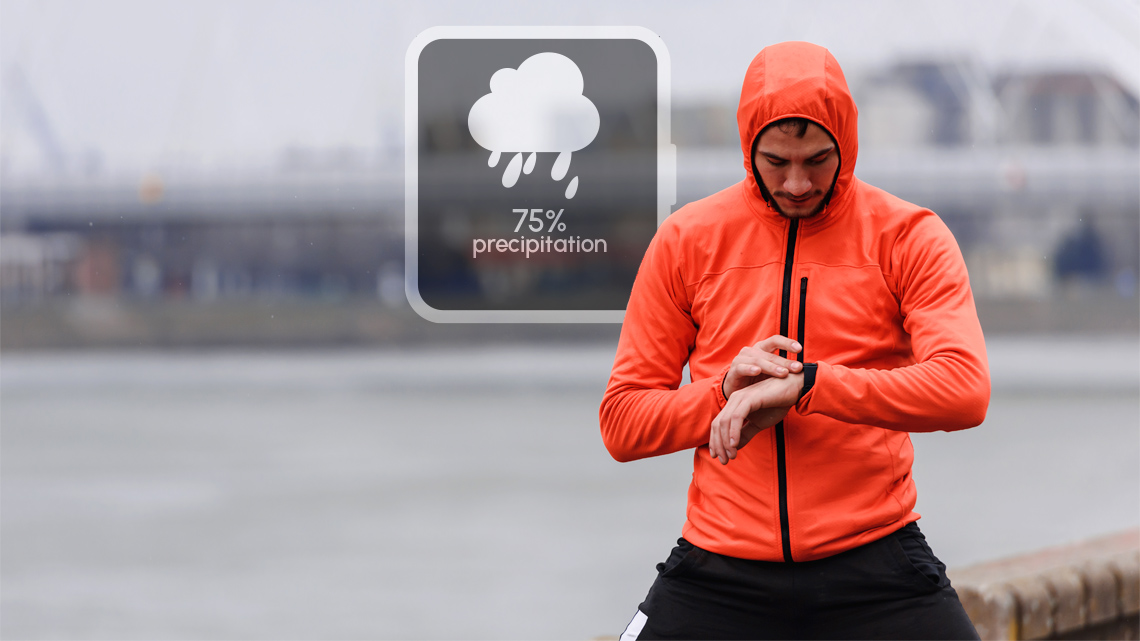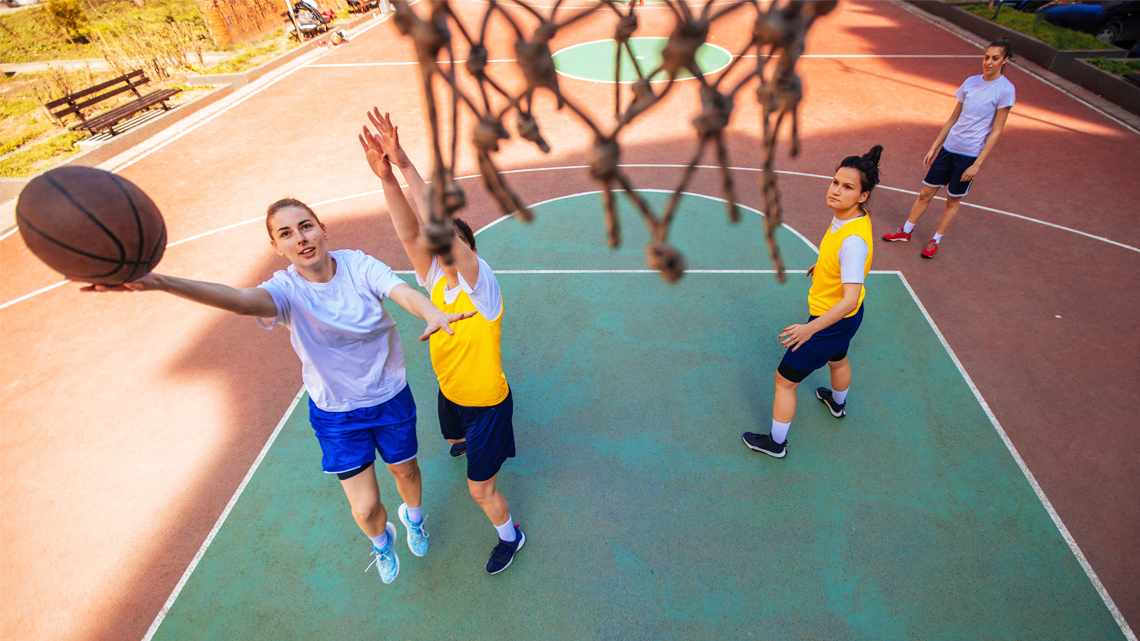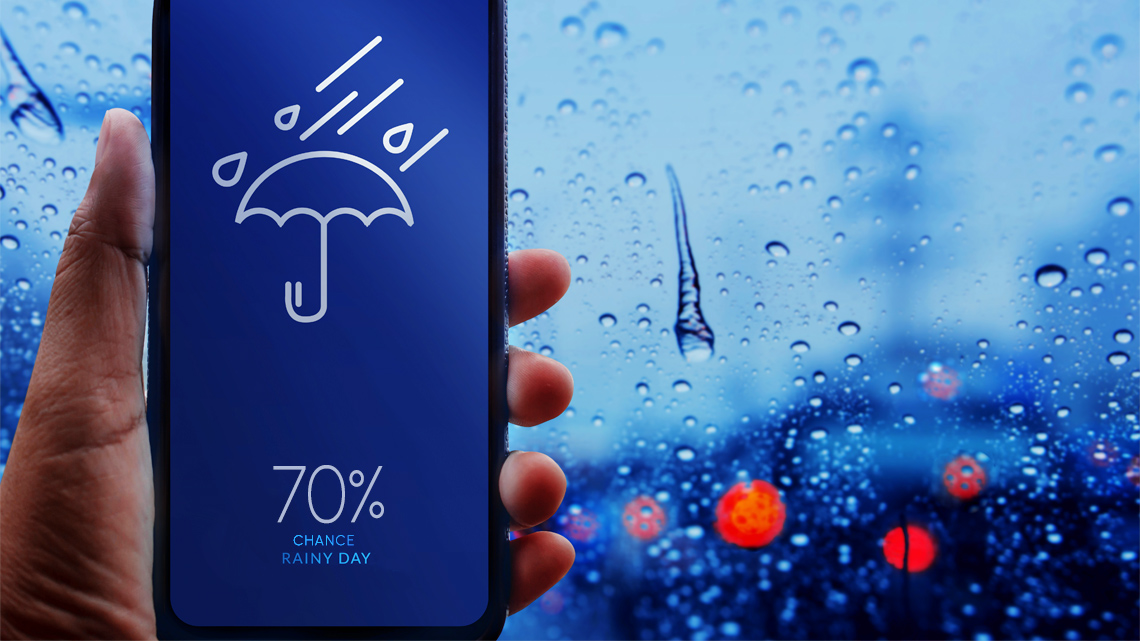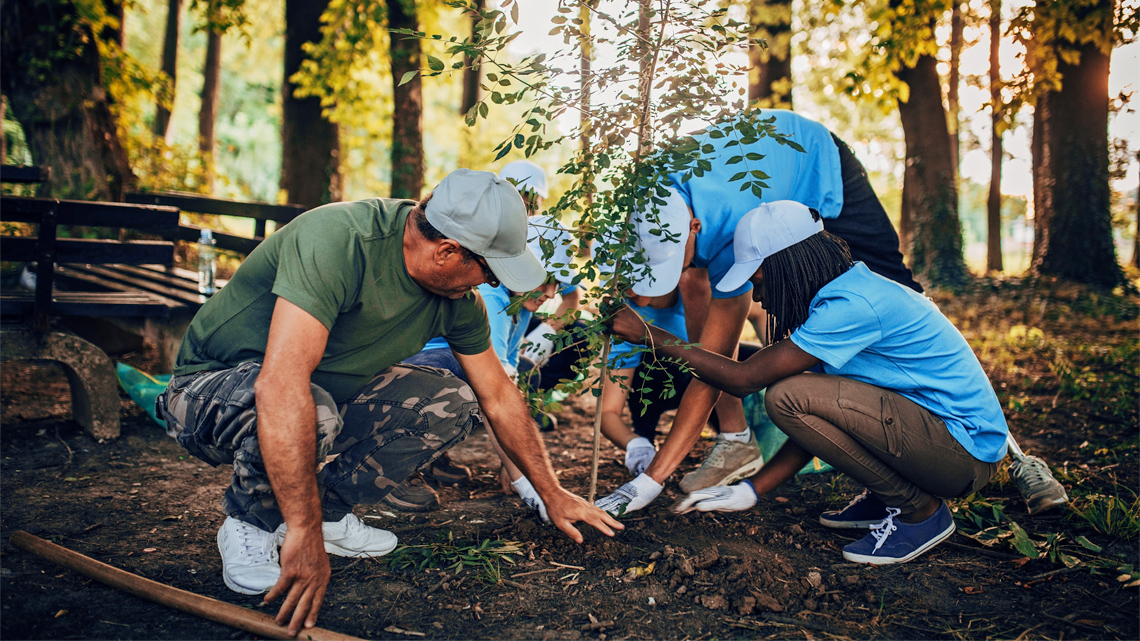Minds On
What can probability tell us?
Determine the more appropriate option in each scenario. Throughout this learning activity, you can record your thoughts digitally, orally, or in print.
Justify your choices by exploring the probability line provided. How might the probability line support you with making decisions?
1) An athlete turns on the weather network and finds out that there is a 75% chance of rain today. Should they stay inside or go for a long run?

2) At the park there are two teams playing basketball, one team has been able to make 3/10 shots and the other has been able to make 9/10 shots. Which team is most likely to make the next shot?

3) At a fair there is a game where people can select between flipping a coin or picking a number between one to 10 in order to win a prize. Which game should the next player pick in order to have a better chance of winning?

Action
Making informed decisions
How can we use the probability of an event to make a decision about what we should do in the future?
Press the ‘Hint’ button for an example.
If something is very likely or certain, you can predict that the event is going to happen. If something is very unlikely or impossible, you can predict that the event is not going to happen. Then, you can use these predictions to make an informed decision about what to do!
Plotting the event on a probability line can help to make informed decisions. Using a probability line, you can determine and compare the percentage, decimal, fraction, and probability term. One end of this line will represent the impossibility of an event and the other end of the line will represent that an event is certain.

Let’s use the probability line to make informed decisions about the events below and determine where each scenario would be placed on the probability line. Record your ideas in a method of your choice.
- There is a 70% chance of a rainstorm. Should you go on a walk?
- Should a candy shop say they will give a customer free candy if the coin they flip lands on heads?
- You want a gummie candy. Should you pull a candy randomly out of a bag that has 10 gummie candies, 15 hard candies, and 20 chocolate candies or should you pull a candy randomly out of a bag that has 8 gummie candies, 4 hard candies, 4 chocolate candies and 1 sour candy?
- A director is choosing a new location for a movie. For the days that they will be in a city they determined the possibility of rain. For City A, there is a three out of 10 chance it will rain, for City B there is a five out of 15 chance it will rain, and for City C there is a two out of 20 chance it will rain. Which city should the director pick to film their sunny movie scene?
Making predictions
You can use probabilities to make predictions about events. Your predictions should be based on what is the most likely outcome.
Consider that you have a box of candies that has four clovers, six suns, three stars, two hearts, and two water drops. You are going to pick one out randomly. Which candy do you predict it will be?
To figure out the answer, you need to calculate the probabilities of each event occurring. They can be represented as a fraction, decimal, or percentage. Then, make a prediction that you will randomly pick the candy with the highest probability.

Complete the Predictions Chart in your notebook or using the following fillable and printable document.
|
|
Fraction |
Decimal |
Percent |
|---|---|---|---|
|
Clover |
4/17 |
0.24 |
24% |
|
Sun |
|
|
|
|
Star |
|
|
|
|
Heart |
|
|
|
|
Water Drops |
|
|
|
Press the ‘Activity’ button to access Predictions Chart.
What do you predict? Justify your prediction.
What could you change about the bag to make the clovers the most likely candy picked?
Conducting experiments
Make a prediction about the following experiment. As an option, conduct the experiment to determine if your prediction is correct.
Experiment 1
There is a digital spinner that is divided into eight equal parts. When the spinner lands on a space the information is revealed.
Here is an example of a spinner:

Answer the following questions and record your ideas using a method of your choice.
- If you spin the spinner 15 times, which outcome do you believe will occur the most?
- Determine the probabilities of each space in whichever method you prefer (fraction, decimal, percent).
- Make a prediction.
For this activity, the results for spinning the spinner 15 times are provided for you. The results after 15 spins are:
|
Flower |
Flower |
Flower |
|
Tree |
Flower |
Tree |
|
Car |
Tree |
Rock |
|
Car |
Tree |
Flower |
|
Flower |
Rock |
Car |
Compare your predictions to the results. Were your predictions similar of different to the results? Why or why not?
Deal or No Deal
In the game, contestants are presented with 26 briefcases. Inside each container there is an amount of points ranging from 1 to 1,000,000. Each amount of points occurs only once. Contestants select one container, whose contents will belong to them. The amounts in each briefcase are as follows: 0.01, 1, 5, 10, 25, 50, 75, 100, 200, 300, 400, 500, 750, 1,000, 5,000, 10,000, 25,000, 50,000, 75,000, 100,000, 200,000, 300,000, 400,000, 500,000, 750,000, 1,000,000.

In this game, what is the probability of:
- Winning points?
- Winning more than 100,000?
- Winning 1,000,000?
- Winning less than 100?
With these probabilities in mind, would you play this game? Record your answers in a method of your choice to share later.
There is also a game director that offers points to the contestant in exchange for their container.
As the containers that were not chosen begin to get opened one by one and reveal the points inside, the game director offers changes depending on the probability of what is in the chosen container. If smaller numbers get revealed in the remaining containers, do you think the offer will go up or down? If larger numbers get revealed in the remaining containers, do you think the offer will go up or down?
What should the contestant do?
The contestant has chosen container #7. They have opened 10 containers and 15 remain unknown. The containers opened reveal the following amounts: 1,500,000, 1,000, 500, 100, 750, 5, 25,000, 400, and 25.

They are being offered 537,000 points to stop playing. Should they take those points or keep the container they selected?
Record your decision and justify it.
Consolidation
Create a probability scenario
Create your own probability scenario! In your scenario, provide at least four possible outcomes and some information about their likelihood. End your scenario with a question about a decision that needs to be made.
Example scenario:
A community centre is asking for volunteers to help support a local planting project. There are four different types of seeds that will be handed out at random. There are sunflower seeds, grass seeds, lavender seeds, and mixed flowers. There are 40 volunteers for this event. How many volunteers should plant each type of seed? If the community centre is more interested in growing flowers, how many packets of each seed should they have to hand out?

Reflect
Reflect on and answer the following questions:
- Why is it important to understand probabilities in order to make predictions and informed decisions about events?
- Which method of expressing probabilities is the most useful? Why?
Reflection
As you read through these descriptions, which sentence best describes how you are feeling about your understanding of this learning activity? Press the button that is beside this sentence.
I feel…
Now, record your ideas using a voice recorder, speech-to-text, or writing tool.
Press ‘Discover More’ to extend your skills.
Discover MorePractice with games
Practice using probability to make informed decisions with the game Plant Lab.

Press the TVO mPower button to access Plant Lab. You will need an mPower login to access the game.
TVO mPower (Opens in a new tab)Connect with a TVO Mathify tutor
Think of TVO Mathify as your own personalized math coach, here to support your learning at home. Press ‘TVO Mathify’ to connect with an Ontario Certified Teacher math tutor of your choice. You will need a TVO Mathify login to access this resource.
TVO Mathify (Opens in a new window)